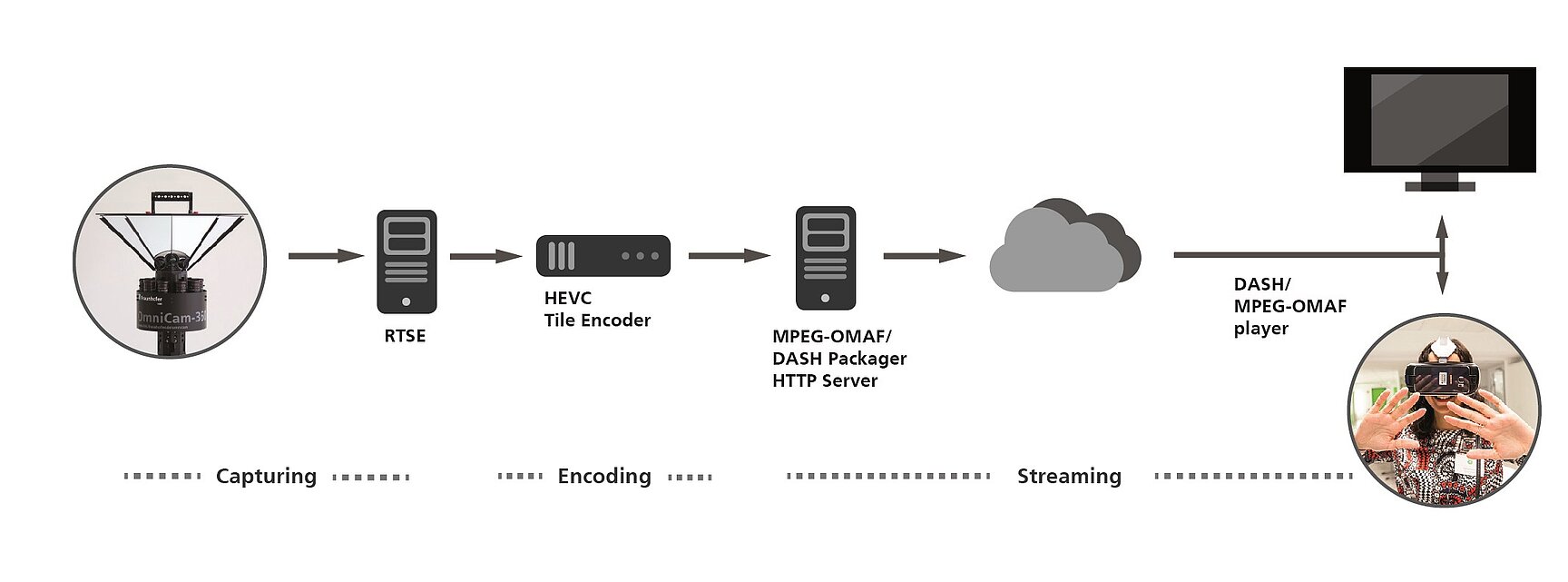Virtual worlds are still a major trend, whether in panorama videos, computer games or in planning processes in the industry. The delivery and storage standard MPEG-OMAF ensures that all VR devices speak the same language and are compatible with each other. The fully standardized HEVC tile-based streaming technology of Fraunhofer HHI will moreover enable a significant increase in the resolution of 360-degree videos with MPEG-OMAF. This is how high-definition video footage enters Virtual Reality. This technology will be shown at IFA 2018 in Berlin from August 31 to September 5 at the joint booth of Deutsche TV-Plattform (hall 26A, booth 203).
Streaming high-quality VR360 panoramic video with resolutions up to 8K consumes large amounts of bandwidth. Moreover, the encoded video requires decoding capabilities beyond 4K video at the receiving end, e.g. on VR glasses with a mobile phone. Fully standardized tile-based streaming solves these issues by spatially segmenting the panoramic video into tiles. Each tile is encoded with HEVC at the original high-definition and an additional low-definition resolution.
The new MPEG-OMAF standard allows to package the HEVC tile streams in a way that the receiver, e.g. VR glasses or a TV screen, can request the high-definition tiles for the user's viewport and low-definition tiles for the areas out of sight. The tiles are aggregated into a single HEVC compliant video stream and decoded with a legacy hardware video decoder on the end device.
At IFA 2018, Fraunhofer HHI showcases a demonstrator for consistent VR 360 degree live video streaming with a resolution higher than 4K. This includes high-resolution 360-degree video capturing and live rendering by the Fraunhofer HHI Omnicam-360 with a resolution of 10K x 4K, HEVC tile-based live encoding with the Fraunhofer HHI HEVC encoder, packaging according to the MPEG-OMAF viewport-dependent media profile and high-quality playback on VR glasses and TV screens.
